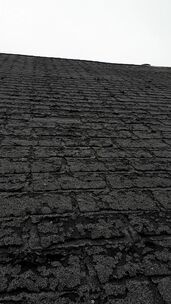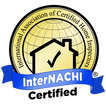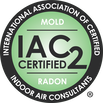Mike's Home Inspector BlogMichael Burfitt |
 This is a perfect example of a roof covering that needs replacement. This is a perfect example of a roof covering that needs replacement. There are few things that I consider more important than providing outstanding home inspections: operating my business in a safe, legal, and ethical manner is one of them. I am extensively trained and experienced in working from heights thanks to my career in building operations and know how dangerous and difficult working at elevations can be. While there are some variables and subjectivity involved, such as snow or rain, there is no need to be subjective about what is considered a safe roof height to traverse: Nova Scotia’s laws prescribe the regulations involved in working from heights without a proper fall arrest system. Workplace Health and Safety Regulations - Occupational Health and Safety Act (Nova Scotia) You are welcome to try and read the entire set of regulations without falling asleep but all you need to know is that you can only work up to 10' (3m) from a safe surface without having a fall arrest system. While such residential fall arrest systems do exist, they are expensive and used almost exclusively by roofing companies. So, how do we inspect the roof if it cannot be traversed safely or legally? There are a number of alternatives. The easiest such way is to inspect from the eaves while remaining on the ladder. Often times I can easily inspect from the ladder as I have developed a sixth sense if the roof has an issue and know what to look for. This is my preferred method but is not always feasible, especially on very tall houses. The next alternative, while not my favourite, is to use a pair of binoculars to check the condition of the roof from the ground. UPDATE: As of 2022, I now have a drone (or helicopter as my son likes to call it) to provide a higher quality roof and gutter inspection when it isn't possible to traverse the roof. I did one inspection where there was no way to either reach the roof or see it from the ground. To accomplish this inspection, I got as high as I could and used a pole to attach my camera. The picture I took clearly shows the roof was well past its life expectancy and needed immediate attention. There are also some roofs that cannot be safely stepped on by home inspectors no matter how close they are to the ground. Two such examples are roofs with a metal covering and steep roofs of any kind. I also inspect roofs from the underside by entering the attic space. This is the only way to determine if there are any active roof leaks or evidence of any past leaks: there are a number of indications such as an anomaly on my thermal imager, compressed insulation, organic growth and of course visibly dripping water. This blog makes it clear how passionate I am about sharing my knowledge of home inspections and how much I go the extra mile for my clients but never at the expense of anyone’s safety. If I ever get the temptation to skirt the law or do something I know is unsafe I just remind myself of the person who has to tell my toddler that his Daddy considered getting a slightly better view of a roof as more important than coming home safely at the end of the day. |
Archives
July 2024
Categories
All
|
|
Inside Edge Home Inspections Ltd.
Halifax, NS 902-209-9921 [email protected] Proudly Serving the HRM & Central Nova Scotia |

 RSS Feed
RSS Feed

